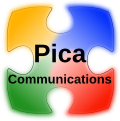
Making Microsoft Less Competitive
SA limits how quickly Microsoft can respond to its competition
By Paul DeGroot
Principal Consultant
Pica Communications
Software Assurance creates constraints that limit Microsoft's ability to respond quickly to changing market events. This is particularly true for a company that is stuck on three-year product cycles, while many of its competitors are far younger, more agile, and modifying their offerings as frequently as every month.
SA contributes to pricing and licensing inflexibility in several ways.
First, reducing prices to meet competitive threats is tough when many customers are still on the hook for ongoing payments at the old price. At worst, Microsoft simply stiffs existing SA customers. For example, Office 2007 had an Enterprise edition that included OneNote and Groove and cost about $105 more than Office 2007 Professional Plus. A customer who purchased SA on Office 2007 Enterprise was therefore paying about $31 more a year for SA than it would have for Professional Plus. After a couple of years of apparently very soft sales of the Enterprise edition, Microsoft cut its price to the same as Professional Plus, and canceled any plans it might have had for an Office 2010 Enterprise edition. What happened to the SA premium that customers paid in advance for Office 2010 Enterprise? Microsoft shareholders are grateful.
Even reducing prices at a formal version boundary is problematic. SA customers have been paying SA on the old price, in expectation of a discount of 13% to 25%. If Microsoft reduces the price of the next version by 25%, what happened to the discounts? If the house changes the rules too often, customers will place their bets elsewhere.
SA also creates significant opportunities for unflattering price comparisons. For example, is Google Apps 10% of the cost of Office, or 5%? Depends whether you're using the price with SA and the price without, but there's no doubt that when the competition gets the chance to do price comparisons it's going to use the price with SA, nearly doubling its apparent price advantage.
Microsoft can't easily insist that competitors shouldn't add SA to the price comparison when
a) Microsoft pushes SA at every opportunity, and
b) Upgrades may be built into the competitor's price, particularly for a Web subscription (like Googe Apps), so Office with SA is actually the more appropriate comparison.
Competitors can also confuse Microsoft customers by pointing out that some products they consider to be almost free are actually very expensive. Products like the Microsoft Desktop Optimization Pack, the Home Use Program, and so on may appear inexpensive (less than $15 in most cases) at first, but they require SA, which bumps their real price up over a 3-year period by a fairly astounding 500% to 1,500%. Again, smart competitors can frequently point out that their prices don't include or require SA, making them a better long-term value.
